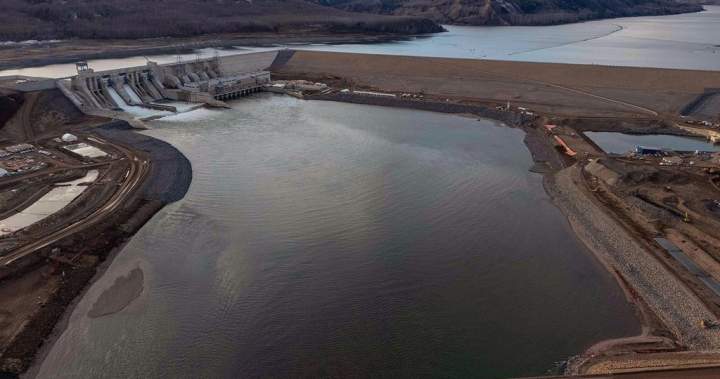In a watershed moment for British Columbia’s energy landscape, the controversial Site C hydroelectric dam has finally reached full operational capacity after years of construction delays, budget overruns, and environmental debates. The massive infrastructure project on the Peace River now stands ready to power approximately 450,000 homes across the province, fundamentally altering B.C.’s energy production portfolio.
“This marks the culmination of one of the largest infrastructure projects in B.C.’s history,” said Premier David Eby at yesterday’s ceremonial powering of the final turbine. “While the journey here has been challenging, Site C will provide clean, renewable electricity for generations to come.”
The dam’s completion represents a significant victory for BC Hydro and provincial officials who have steadfastly defended the project despite its troubled history. Initial estimates placed construction costs at $8.8 billion when approved in 2014, but final expenditures have ballooned to approximately $16 billion—nearly double the original projection.
Energy analysts point to several factors that contributed to the spiraling costs, including geotechnical issues discovered in 2020 that required substantial foundation reinforcements. The COVID-19 pandemic further complicated construction timelines, forcing work stoppages and supply chain disruptions that added both time and expense to the already delayed project.
Indigenous communities remain divided on the dam’s completion. While some First Nations have signed benefits agreements with the province, others continue to express profound concerns about the flooding of traditional territories and disruption of ancestral lands.
“We’ve lost significant cultural sites and hunting grounds,” said Chief Roland Willson of West Moberly First Nations, a long-standing opponent of the project. “The environmental cost of this dam extends far beyond its financial overruns.”
Environmental organizations have likewise criticized the project, arguing that the 5,100-hectare reservoir created by the dam has destroyed critical wildlife habitat, including some of the province’s most productive farmland in the Peace River Valley.
Despite these criticisms, BC Hydro officials maintain that Site C represents a crucial investment in Canada’s energy future. The crown corporation estimates the dam will produce about 5,100 gigawatt hours of electricity annually—enough to power nearly half a million homes—while preventing approximately 34.7 million tonnes of carbon dioxide emissions over its first decade of operation.
The dam’s completion comes at a pivotal moment in British Columbia’s energy transition. With increased electrification of transportation, home heating, and industrial processes, demand for electricity is projected to grow substantially in coming decades. Energy Minister Josie Osborne noted that Site C’s capacity will be essential for meeting these future needs while maintaining the province’s commitment to reducing greenhouse gas emissions.
“The electricity generated here will support our climate goals while ensuring British Columbians have reliable power as we transition away from fossil fuels,” Osborne said.
For residents of northeastern B.C., the project’s completion brings mixed emotions. While some celebrate the economic benefits and jobs created during construction, others lament permanent changes to the landscape they’ve known for generations.
With Site C now fully operational, attention turns to the project’s long-term impact on B.C.’s energy rates. BC Hydro has indicated that the dam’s electricity will be among the most cost-effective in their system over its projected 100-year lifespan, but ratepayers may see increases in the short term to cover construction costs.
As British Columbia moves forward with this massive new energy asset, the question remains: Will Site C’s clean energy benefits ultimately justify its financial and environmental costs in an increasingly climate-conscious world?










